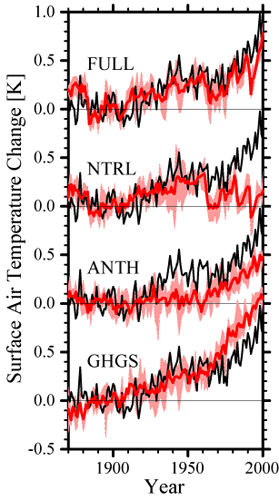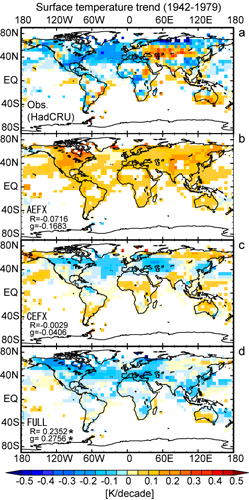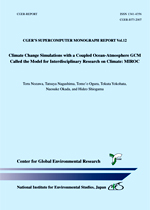NOZAWA T., NAGASHIMA T., OGURA T., YOKOHATA T., OKADA N., SHIOGAMA H.
CGER Reports
CGER’S SUPERCOMPUTER MONOGRAPH REPORT Vol.12
Called the Model for Interdisciplinary Research on Climate: MIROC
Summary - 79p -
This monograph summarizes the results of various climate change simulations carried out utilizing a climate model, with the goals of projecting future climate change resulting from human activities such as the release of greenhouse gases, and elucidating mechanisms of the observed historical long-term climate change. The model used in the simulations is the atmosphere-ocean coupled model called MIROC (Model for Interdisciplinary Research on Climate); this model was developed collaboratively by the National Institute for Environmental Studies, the Center for Climate System Research at the University of Tokyo, and the Frontier Research Center for Global Change at the Japan Agency for Marine-Earth Science and Technology. The model has a horizontal resolution of about 300 km in the atmosphere and 150 km in the ocean.
This monograph introduces primarily the below findings. The model reproduces very well observed temperature changes in the 20th century in a number of experiments taking into account all factors (both anthropogenic and natural causes) (Figure 1). Consideration of the results of simulations that take anthropogenic causes and natural causes into account separately indicate that recent trends toward global warming are attributable to anthropogenic factors, while increasing temperatures in the first half of the 20th century are mainly attributable to natural factors (Figure 1). Furthermore, we discovered that we must include the effects of carbonaceous aerosols (such as soot, etc.) in the model in order to reproduce climate change at the regional level (Figure 2). Results from simulations predicting future climate change based on the IPCC (Intergovernmental Panel on Climate Change) emissions scenarios made it clear that though the amplitude of change may differ based on the scenario, the spatial distribution of events such as rising temperatures and change in amounts of precipitation are quite similar.
Part of the results from the simulations in this monograph is distributed to researchers around the world, and is quoted in the IPCC 4th Assessment Report.


Contents:
- Foreword
- Preface
- Contents
- List of Figures
- List of Tables
- Abstract
- Chapter 1 General Introduction
- Chapter 2 Model Description and Experimental Design
- Chapter 3 Simulated Climate States in the Control Experiment
- Chapter 4 Transient Climate Responses to Increasing CO2
- Chapter 5 20th Century Simulations
- Chapter 6 Projections of Climate Change under IPCC SRES Scenarios
- Chapter 7 Summary and Conclusions


 PDF, 4.37 MB
PDF, 4.37 MB